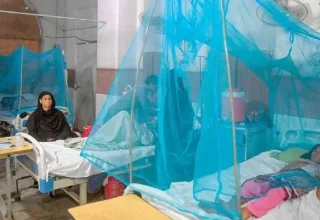
Do you know international orange juice prices have increased by more than 300 percent since 2020, clocking to an all-time high? Some even joke that it may beat certain hedge funds out there but why?
Given extreme weather events and disease outbreaks hurting both near and long-term prospects of a thinly traded market, a constrained production outlook from the United States, Brazil and Mexico has played a key role in this development.
Pakistan stands as the 13th-largest citrus producer globally, consistently yielding 2 to 2.4 million tonnes annually from approximately 200,000 hectares over the past decade.
Pakistan’s citrus production has increased marginally between 2018 and 2022 from 2.35 million tons to 2.55 million tons but the cultivated area has actually declined by nearly 20 percent from 0.45 million acres to 0.35 million acres during the same time.
Pakistan is not immune to the ghosts haunting orchards globally with a mysterious and devastating disease sweeping through citrus groves worldwide for years including Pakistan, leaving a trail of withered trees and unanswered questions in its wake.
This sudden death syndrome, known as citrus sudden death (CSD), has baffled scientists and growers alike across the globe. Some say it caused due to citrus sudden death-associated virus (CSDaV) which may have spread through aphids.
Others blame a bacterium candidatus liberibacter citri or a certain fungus as a reason while it is also possible that environmental stress factors such as flooding and nutrient deficiency play a more important role in its occurrence and transmission.
The disease, first identified in Brazil in the early 2000s, has since spread to other major citrus-growing regions, including Argentina, Paraguay, Australia, Pakistan and South Africa.
It is characterized by the rapid decline and death of citrus trees, often within months or even days. Affected plants & trees exhibit various symptoms, including wilting, yellowing leaves, and fruit drop.
Well-informed sources have said that this year too farmers have experienced a more significant outbreak of this disease in Toba Tek Singh, which is the major production region after Sargodha.
Some farmers have even spent from a few lacs to nearly half a million on their crops in the name of pesticides and fungicides to curb this ‘disease’. These are sold by salesmen claiming to cure something even international researchers have struggled to find the right cause let alone a cure.
“It is true that more plants have experienced death this year given higher than expected fruiting against insignificant nutrition,” stated Deputy Director Agriculture Extension Horticulture in District Sargodha Dr Basharat Ali Saleem while talking to Internews.
He added that sudden death is mostly a management issue with some role played by fungus, and intercropping with incompatible crops like Wheat which leads to irrigating or drying the orchard at the wrong time given citrus cannot survive standing water for more than four days.
The industry faces numerous other challenges as well where issues related to pests, diseases, pruning, nutrition, and irrigation, low profitability hinder the widespread adoption of improved practices.
Only 10 percent of the citrus crop is earmarked for export as deficient value chains and ineffective cropping practices have curtailed export growth.
We characterize sudden death often as a symptom of multiple other diseases and stress factors rather than a disease on its own and it’s true that researchers have been unable to figure out an authentic cause up to this day,” stated Dr Azher Nawaz, Citrus Expert and Associate Professor at the Department of Horticultural Sciences, Islamia University Bahawalpur.
However he noted that it is a conclusive fact that where orchards are managed effectively and provided nutrients and pesticides in a timely manner as per recommendations, they rarely suffer sudden death.
He added that in addition to the occurrence of the fungus phytophthora, the use of unhealthy rootstock (underground plant part from which new plant is produced) by largely unregulated nurseries is also a major factor contributing towards this syndrome.



































